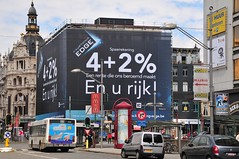What is deferred gross profit? I’ve been reading and analyzing PHES financial statements for the year 2011 and I’ve come across a balance sheet term which is kind of familiar to me but I thought I lost the grasp of it already. So obviously since I wanted to know PHES financial statements and then interpret the results of its operations for the year 2011, I dig in further. I went to my books and reread again, went to Google and check the latest accounting treatment of it. In short, I refresh my mind on what this Deferred Gross Profit is all about.
For one thing, Deferred Gross Profit of PHES is 77% of its total liabilities and thus needs our clear and undivided attention in understanding its meaning, or perhaps at least its basic terms.
Oh man, I remember my professor here now. Did I learn something from him? Well I think I slept too much then during his class and the thing that I remember is daydream what the future holds for me. Okay, so much of that crap. I really need to restudy. I thought refresher courses and seminars are great.
Deferred Gross Profit is being used when a company is using Installment Sales Method. Under the installment sales method, the sale is recognize when the cash is collected. Okay somebody shouted at the back” Of course when you receive cash, you recognize a sale! It’s simple, stupid.” My friend, in accrual accounting, a sale is recognized when services are rendered or goods are transferred with or without cash.
Aling Tonya’s Sari-Sari Store
Let us take Aling Tonya’s sari-sari store as an example. Yesterday, you bought a shampoo sachet worth 5 pesos at Aling Tonya’s sari-sari store. That is called cash sale and the sale is recognized because the shampoo is already transferred to you. Today, you bought your favorite shampoo Palmosilk sachet again at Aling Tonya’s store but this time you don’t have money. You requested Aling Tonya if you can pay her next week. She agreed because you are handsome. She gave you the shampoo and you went home. That is called an account sale and the sale is recognized even though there is no money involved. You see, revenue recognition is easy.
Real Estate Business
Now, what about in real estate business, do the same principles apply? Unfortunately, the answer is no. When you talk about construction of buildings, condominiums, houses, airports, hospitals, schools, roads, highways, etc., we have different methods in order to recognize revenue. We have percentage-of-completion method, completed-contract method, Installment sales method, Cost recovery method, and Deposit method.
Below table shows how PHES recognize its sales from real estate business.
| Condominium units and developed lots in progress (kasalukuyang ginagawa pa ang condo o pagaayos ng lote) | percentage-of-completion method |
| Material improvements on condominium units (mga customer na gustong magpadagdag ng kung ano ano sa kanilang condo) | percentage-of-completion method |
| Virtually completed residential lots and housing units where sufficient down payment has been received and when collectibility of the sales price is reasonable assured (tapos na ang paggawa ng bahay o pagaayos ng lote at sapat ang downpayment, may kasiguruhan ang pagbayad sa kabuuang presyo ng bahay ) | full accrual method |
| Completed residential lots and housing units where sufficient down payment has not been received or when collectibility of the sales price is not reasonable assured (tapos na ang paggawa ng bahay o pagaayos ng lote ngunit hindi sapat ang downpayment,at walang kasiguruhan ang pagbayad sa kabuuang presyo ng bahay ) | installment method |
| If any of the criteria under the percentage-of-completion method is not met (none of the above) | deposit method |
Installment Sales Method
As you can see in the above table, PHES uses installment sales only when the housing units and residential lots are completed already. I repeat, completed already. For example, you bought a house from PHES for 1 million pesos to be paid in 15 years. Since PHES do not know if you will be able to faithfully pay your monthly due to them, they will not recognize the sale immediately in their books due to the considerable uncertainty of collection. Instead, they will recognize sale based on your payments to them. Yes, sale will be recognized when you pay PHES every month.
Computation of sale is based on your payment to PHES and its gross profit percentage to your house. If on your 1st year, you paid 66,666 to PHES, PHES will recognize sale as 26,400 pesos (66,666x40%). That’s it, it’s very simple.
One second, where did the 40% came from? 40% came from the internal computation of PHES on the gross profit of the house they sold to you. Based on our example, the selling price of the house is 1 million and the cost it needs to build the house is 600,000 pesos. The remaining 400,000 pesos is called gross profit. Gross profit percentage is 40% (400,000÷1,000,000).
Deferred Gross Profit
Finally, we are at the Deferred Gross Profit (DGP). DGP is an integral part of the installment sales method. So how did the DGP appear in the Financial Statements?
Here is how a Deferred Gross Profit is being computed.
You have decided to live on a house you can call your own instead of renting an apartment. Your sheer hardwork and determination in your job has made your salary triple for the past five years. You have enough money to buy a house already.
Mang Ben Real Estate is a real estate company. Anybody who wants to buy a house and lot can contact the company. Since Mang Ben is your preferred real estate company because of their keen eye in identifying superb location, you called them and asked if they can build your dream house. The contract price for all the land, labor, materials and overhead will be shouldered by Mang Ben. He will just bill you every year. Downpayment is 200,000 pesos and starting Year 2013, you need to pay 100,000 pesos for ten years. The total price is 1,200,000 pesos.
You initially paid 50,000 pesos downpayment so that Mang Ben can start constructing your dream house. Below is Mang Ben’s record.
| Contract Price | 1,200,000 |
| Cash Received | 50,000 |
| Balance to Received | 1,150,000 |
After a few months, financial crisis sets in. Most of the companies are having a hard time pulling out the inventories from the shelves. Sales are so slow. News have spread about various companies closing down. Business is not good. And so Mang Ben is thinking whether you can pay him reasonably at the agreed payment terms for the remaining balance. Your house is virtually complete by end of 2012 with Mang Ben shelling out 720,000 pesos for your house.
By December 31, 2012 you paid Mang Ben another 50,000 pesos downpayment because you just received your bonus.
Below is Mang Ben’s record as of December 31, 2012.
| Contract Price | 1,200,000 |
| Cash Received | 100,000 |
| Balance to Received | 1,100,000 |
So for the year 2012, how will Mang Ben record his transactions in the books?
1. Dr. Installment Contract Receivable (Non Current) 1,000,000
Dr. Installment Contract Receivable (Current) 200,000
Cr. Real Estate Sales Year 2012 1,200,000
To record sales of house to Juan Masipag
2. Dr. Materials/Labor/Overhead (Cost of Real Estate Sold) 720,000
Cr. Cash in Bank or Accounts Payable 720,000
To record materials/labor and direct overhead
3. Dr. Cash 100,000
Cr. Installment Contract Receivable (Current) 100,000
To record cash collected from Juan Masipag
4. Dr. Real Estate Sales Year 2012 1,200,000
Cr. Materials/Labor/Overhead (Cost of Real Estate Sold) 720,000
Cr. Deferred Gross Profit 480,000
To close 2012 accounts
5. Deferred Gross Profit 40,000
Cr. Realized Gross Profit 40,000
To record realized gross profit
The first three entries in the books are straightforward. You just record the transactions as they occur. The 4th and 5th entry requires computation at the end of the year.
| Real Estate sales | 1,200,000 | 100% |
| Cost of Real Estate Sold | 720,000 | 60% |
| Gross Profit | 480,000 | 40% |
| | |
| Cash Collected | 100,000 | |
| x Gross Profit % | 40% | |
| Realized Gross Profit | 40,000 | |
It’s clear? F_ck, it is clear as mud! Forget about it? Leave your questions on the comments below because I am committed in converting the mud into crystal clear water.





